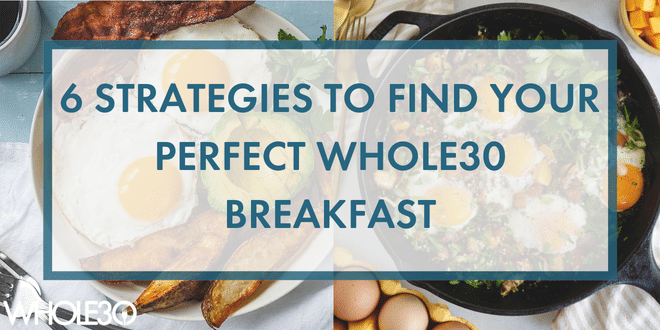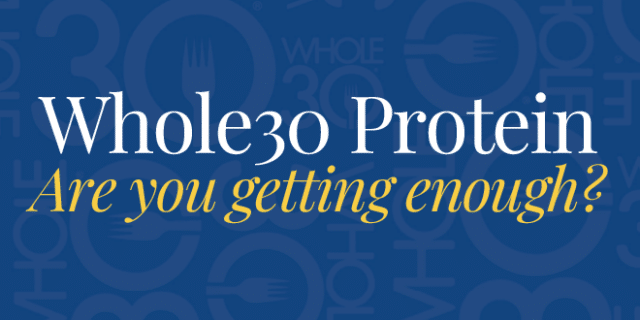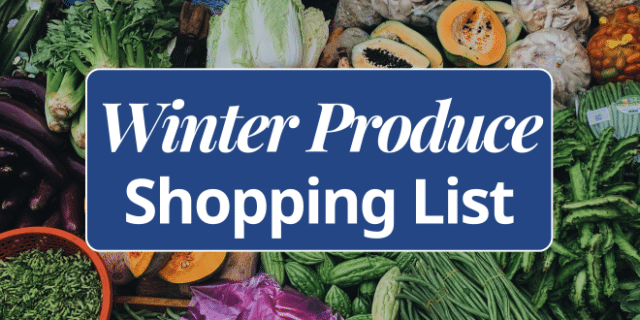Breakfast. Break the fast. Brekkie—or even brunch, depending on your schedule. We often hear chatter about your first meal being the most important of the day—including in a 2022 Cleveland Clinic interview with Beth Czerwony, RD. They agree that breakfast benefits can range from reducing brain fog to improving your heart health.
Yet, frequent searches on our site tell us many people doing the Whole30 wonder if they can skip breakfast altogether. The short answer is that you shouldn’t skip your morning meal on Whole30.
But before you decide to resign yourself to pushing through breakfast as another “have to” moment in your day, let’s talk about the reasons you might not love breakfast. Then I’ll offer you a few strategies for finding your ideal breakfast approach on Whole30, during Reintroduction, and even into your Food Freedom.
Why You Might Be Avoiding Breakfast
After listening to your feedback, we’ve identified a few common reasons people ask themselves (and us), “Can I skip breakfast on a Whole30?”
- You just don’t feel hungry enough to eat (or you even have an aversion to eating) during the first few hours of your day.
- You’re still focused on the scale and trying to limit your food intake.
- You don’t like your breakfast options.
You’re Not Hungry
If the first reason sounds familiar, you might feel a simple lack of hunger. But you might even be someone who is nauseated or disgusted by food in the morning. You might need some ideas on how to reset your hunger cues in the morning. Check out this blog, written from one breakfast-hater to another.
You’re Trying to Restrict Yourself
If the second reason is secretly yours—you’re looking to skip a meal to reduce your food intake —I want to gently remind you that mindset is a crucial component of the Whole30. We know weight loss might still be in the back of your mind; after all, it’s hard for any of us to truly escape the pressures of diet culture. We honor all of your goals, but diet means something different here.
Here’s a page with a little more information about Whole30’s position on weight loss. But please don’t skip breakfast in an attempt to eat less. You can commit to the elimination of inflammatory foods for a temporary period on Whole30, but restriction of calories, entire meals, or specific macronutrients (like carbs) isn’t part of the deal. And that’s because the empowering, exciting Non-Scale Victories you can uncover with Whole30 (like better sleep, more energy, and improved digestion) are less accessible if you’re hungry.
You’re Underwhelmed By the Menu
If I were to ask you to tell me about the breakfast you’re trying to skip, what would you say? Would it contain eggs, when you don’t like eggs? Would it be hot, when it’s already hot outside? (Or cold when it’s cold?) Would it take 25 minutes to prepare and require a “real” plate, when you only have 10 minutes and a long commute?
We often think of breakfast as one of two extremes. Either packaged convenience food eaten on the go. Or an expanded “hot breakfast” of bacon, eggs, potatoes, and all the trimmings. One’s a snack, the other is a smorgasbord. But I promise, there’s a happy medium. Actually, not just a happy medium, but your happy medium. Read on for our best Whole30 breakfast strategies, along with a few recipes to help you answer the question, what do people eat for breakfast on a Whole30?
Make It Nice: Tips for Finding Your Whole30 Breakfast Sweet (or Savory) Spot
Even if you buy into the importance of breakfast—and we obviously do!—there’s still the matter of how to make it convenient and appetizing. So here’s where your diligent reading pays off. These six tips should make your Whole30 breakfast an easier, more pleasurable experience designed to meet your individual needs.
(1) Reframe it.
If you can, let go of your preconceived notions or expectations about what breakfast should be. And instead, think about what it could be if you took it out of your mental “breakfast box” and simply made it Meal #1. If you didn’t feel tied to traditional breakfast food and you weren’t trying to replicate it using Whole30-compatible ingredients, what would you eat?
Would it be a leftover burger from the night before? For me, it probably would. I don’t entirely mind leftovers, but I don’t like eating them for the exact same meal. I wouldn’t eat my Tuesday lunch for lunch again on Wednesday, but I sure might have it for breakfast that day!
Would it be breakfast tacos? Would it be salmon (with or without the benedict)? Maybe it would be an inspiring salad or samosa bites you prepared at the beginning of the week. Or—hear me out—it could even be soup.
In short, if you’re someone who has thought about Googling, “What can I eat for breakfast on Whole30?,” the answer is: anything you can eat for lunch or dinner.
(2) Find your bliss—AKA, don’t eat what you don’t like.
Personally, I don’t like sweet flavors in the morning, whether I’m in the middle of a Whole30 elimination or not. I tend to get queasy if I don’t have protein first. But I also really, really don’t like eggs. (Egg aversion is real, and egg fatigue on Whole30 can be even more real!)
Whole30 isn’t about forcing yourself to eat foods you don’t like. In fact, it’s quite the opposite. There’s zero reason to suffer! Yes, you’re temporarily eliminating certain foods so you can test how they affect you once you add them back. But there’s still an absolute feast of flavors, temperatures, mouth feels, and combinations to be found that you do like.
So during your Whole30—or, better yet, as you prep for your Whole30—can you ask your body what it likes and what helps it thrive? This includes satiety, the feeling of physical and mental fullness that keeps us happy, as well as pleasure and digestive impact.
Breakfast is the first time you interact with your body each day through food. Choosing something that excites you and sits well with you after you’ve eaten it is a great way to start
(3) Try easier, not harder.
Not everything has to be a dish. Or a casserole, meat with two sides, or an omelet. It just…doesn’t have to be that serious. That’s where ingredient meals come in.
If you’ve followed us on social media for a while, you’ve probably seen us suggest this. Basically, ingredient meals involve only a combination of whole food items or pre-prepared elements, with minimal to no cooking required. But a lot of these recipes are designed for lunch or dinner, leaving you with lingering breakfast questions.
You’ve already read tip #1, so you know we don’t have to think of breakfast/Meal #1 food as entirely different from lunch or dinner. But even if you’ve decided (using tip #2) that traditional breakfast food is your preference, you can do it ingredient-meal style.
That might look something like this: on Sunday night, you cook a skillet of compatible bacon and let it cool. While that’s happening, you hard boil a few eggs. While those are cooling, you make a simple skillet hash with cubed sweet potatoes, onions, and a little olive oil. At the end, you spiralize a few zucchinis, chop up the eggs, and cut the bacon into bits. Each of those goes in the fridge in a separate container. In the morning, before your commute, you put a scoop of hash in a to-go container, cover it with a few bacon bits, and microwave it for a minute or less. Top it with the chopped eggs, a few zoodles, and some sliced avocado if you have it on hand. Add any spices or compatible dressings you like, and you’ve got a hearty breakfast in 5 minutes or less.
(4) Season for variety—if variety is your thing.
Let’s use that same ingredient meal example above, but talk about flavor fatigue.
You already know part of any holistic Whole30 preparation process involves examining your mindset. Some of that work includes identifying what I’ll loosely call your eating archetype. In this context, I specifically mean: are you a person who can (and likes to) eat the same things every day in a “set it and forget it” way? Or do you need something different at each meal to keep your appetite engaged?
If, like me, you need variety to make sure you’re eating enough and enjoying it, let’s talk. Some people report that the Whole30 can feel daunting because it seems to require so much thinking—meal planning, grocery shopping, meal prep, rinse and repeat. Especially if you’re used to restaurant dining, fast food, or packaged meals, that can be a big shift.
We’ve somewhat solved that problem with meal prep. But solving one problem creates another for folks like us: meal prep, by nature, means you’ll be eating the same ingredients a lot throughout the week. I’m not going to lie—by Friday, the texture and flavor of the same sweet potatoes and onions that tasted great on Monday morning would probably make me gag.
Here’s where two cooking aspects come into play for me. Spices, mostly, but also temperature and texture contrast.
First, switch up your spices. That same sweet potato hash, cooked only with oil on Sunday night, can become a different vibe every day. On Monday, it’s savory with everything bagel seasoning added to the mix after I microwave it. Tuesday, I might add a spoonful of kimchi from my fridge for an umami hit. On Wednesday, I could try an apple pie combo spice (or cinnamon and nutmeg from my pantry) before I heated the potatoes. Thursday, my creative brain might be feeling a little tired, so salt and pepper will do. And then Friday, I’d toss the potatoes in cumin, paprika, salt, and a teaspoon of extra oil, microwave them, then squeeze some lime on top. One potato, seven ways.
Second, consider temperature as part of your variety, because it can change both the flavor and consistency of a dish. In the example above, I’d probably try eating my potatoes cold on Tuesday, so both the potatoes and the kimchi were cold. But maybe with the bacon still warmed, for a nice contrast.
Last, think about textures. If everything in the dish is soft, it can start to blend together, especially as the week goes on. So send that bacon back through the air fryer briefly on Wednesday if you need a crunch in your life. (Everything bagel spice can accomplish some of that, too, and so can nuts!)
(5) Speaking of finding “your thing,” be honest about your lifestyle.
Do you have morning commitments that force you to eat at least partially on the go? Mindful breakfast at a table is great, but it’s not available for everyone, every day. On most days, we need easy Whole30 breakfasts, not perfect Whole30 breakfasts.
If you don’t have access to a microwave because you need to eat your breakfast in the car or at work, don’t make a dish you won’t eat cold.
A bento box with hard boiled eggs drizzled with olive oil and spices, carrot and jicama sticks, black olives, and strawberries works well here. You can assemble it the night before, refrigerate it, and grab it on your way out the door. But something else you can try is a Bell Pepper Sandwich. Make it a BLT with sliced, hard-boiled eggs, wrap it in a sheet of wax paper, and be on your way!
But if you absolutely need a warm meal and you don’t have time to cook, seriously consider a soup. (Because by now you’ve taken breakfast out of a specific mental box, right?) You could microwave it in the morning, throw it in a thermos, and drink it on your way to your next adventure.
(6) Don’t get too precious.
It isn’t an ideal meal if you won’t eat it. I love aspirational food photos and fancy recipes as much as the next person. But they can simultaneously feel inspiring and totally demotivating if they don’t fit what I really need at that moment in my life—if they’re too hard, require ingredients I don’t have on a random Tuesday, or don’t suit my taste buds right now.
So this is just me, reminding you that you don’t have to worry about cooking all the right things—just the right things for you. At breakfast, or any other time of the day.
















